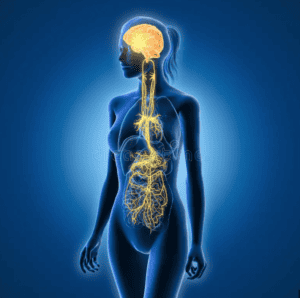Self-Regulation and Resilience
Self-regulation is the ability to meet and adapt to everyday challenges and experiences with ease and expediency – mentally, emotionally, and physically – and then to be able to recover and reset from these everyday stressors within a reasonable period of time. Each person’s ability to meet and recover from experiences, without internal resistance, can be expressed as a given baseline, range or bandwidth of regulation and an inherent level of resilience.
According to the American Psychological Association, “Dysregulation is excessive or poorly managed coping mechanisms in response to an emotional stimulus. These can include inappropriate or extreme emotional reactions, such as outbursts of temper or violence, deliberate self-harm, and other maladaptive or harmful behaviors.” From Psychology Today, “Dysregulation is defined as “any excessive or otherwise poorly managed mechanism or response.”
I’d like to add that dysregulation can be felt as an internal or physical reaction or triggering sensation which causes negative thoughts or an ongoing stress response within the body. Often these responses can cascade over time creating real physical aches, pains and restrictions to the fascia and muscles as well as a shadow aspect to one’s psyche. It like a dark cloud passes over head and makes everything look threatening or bleak.
The question to ask is, what is driving these aberrant responses? It’s most likely a multi-faceted answer which is somehow wired into the body’s nervous system as you’ll see below.
My experience of dysregulation became my soul or higher consciousness’s GPS.
Self-regulation, or rather the pursuit of this inner balance, has been my focus for the better part of my adult life – since the 1990’s. After a couple of medical/surgical challenges I found myself feeling more sensitive to certain things – mainly too much emotion from myself and others. It was like the volume of life got turned up. I felt raw and more exposed in some way. There seemed to be an open doorway where my lifeforce would escape and I went through periods with chronic vertigo. In my effort to feel safe inside my own body again, I began my wellness journey.
I trained in Brain Gym, yoga, meditation, CranioSacral Therapy and other energy practices. I traveled to India, New Mexico, Sedona, Costa Rica, and France to study everything I could about this topic. In 2004, I opened a yoga studio and helped others to grow, heal and feel more empowered and self-regulated.
Perhaps your sensitivity is a message from the cosmos and your higher consciousness.
If you have been given a diagnosis of dysregulation take heart, not everything is as it seems. Be brave enough to look at your weaknesses with kind, compassionate eyes and ask: “What is my soul trying to teach me? Do I need to take a new path? Do I need to adjust my attitudes, beliefs or habits? Do I have any unresolved emotions?”
Maybe you have a gift or a new way of being that is covered up by old outdated patterns of belief systems and habits.
If you are willing to take the journey one breath at a time you will feel better and live better as you learn about who you are. It is happening ‘for’ you not ‘to’ you. Align with your own higher consciousness GPS and see where your life takes you.
Dysregulation is Systemic

The Vagus Nerve
In my humble opinion all dysregulation comes from some sort of glitch (overactive or underactive) in the Autonomic/Central Nervous System (CNS/ANS). As the ANS fires, signals are sent via pathways all over the body which affect and control bodily functions, beginning with the heart and breath rate. The brain and heart send cascading electromagnetic signals through neurotransmitters or chemicals in your brain to initiate activity throughout the body and trigger emotions. For example, if the body needs to run away or flee from danger, heart rate and breathing increases, digestion will slow, and elimination will become sluggish. This is the sympathetic response – system gatekeepers – when confronted with some sort of survival threat – fight, flee, or freeze.
When the sympathetic nervous system is triggered into acting as a gatekeeper for the body system, it sends alarm signals through the Vagus Nerve to all body parts – fight, flight or freeze. People under the strain of chronic vigilance have overactive amygdala and enlarged adrenal glands which effectively means the body is constantly poised to react. This causes the gut/digestive/eliminative functions to diminish and over time can cause several mental and physical issues. A decrease in gut function decreases immunity, endocrine function, procreation, and all systems that require the body to feel some measure of safety to continue. This stage is termed “dorsal vagal shutdown.”
For example, people with anxiety disorders may feel overenergized and unable to calm themselves, or those with autism spectrum disorder may be unable to control sensory input. This type of dysregulation is often seen in those who’ve experienced trauma with neurodevelopmental disorders – obviously these are harder to heal but may be soothed on some level.
In my work with clients, in both energy sessions and hands-on CranioSacral Therapy sessions, we look for and meet blocks in the system which are causing stress in any part of the body. Due to the natural neuro-plasticity of the body, brain and spinal cord, short and long standing issues can be corrected and repatterned. Traumas and their related negative emotions, (anything that throws the body out of normal function) are stored in the system as an electro-magnetic balls of energy or cyst which blocks normal flow and communication between body parts, its systems and our corresponding mental and emotional output. Even chronic negative thoughts, beliefs and behaviors have a corresponding effect on the physical body and the nervous system and can cause dysregulation. Dr. Bradley Nelson, The Body Code and Emotion Code creator, claims that most all dysfunctions have a trapped emotion or a heart wall behind them.
Types of Dysregulation
There are a number of types of dysregulation, though they really are all branches from the same neurological/electro-magnetic tree, as each individual will manifest responses unique to his or her body’s weak areas:
- Emotional dysregulation – out of balance or dominating responses to experiences – can in part be taught or modeled to correct and repattern through movement that utilizes the whole brain, mindfulness, coherence focused breathing techniques, self-esteem building exercises, modeling positive behavior.
- Cortisol dysregulation – this can also be lumped in with the neurological or autonomic dysregulation as the CNS/ANS, Central and Autonomic nervous systems, are stuck in the stress hormone loop of fight, flight or freeze. Chronic stressors will often drop deeper into organ and body systems as the freeze response, effectively slowing down autonomic functions such as digestion and cranial rhythm which contributes to reduced executive function aka brain fog.
- Behavioral dysregulation – can be emotional dysregulation that has turned into self-destructive behaviors and can be helped with some body work, therapy, life-style changes, and anything that enables the person to feel more grounded and safer in their body.
- Neurological or Autonomic dysregulation – could be triggered by an injury event or long-term exposure to stressors, illness or abuse.
- Affect dysregulation – a symptom of emotional dysregulation as emotional responses could be reversed or crossed; i.e., laughing when something is sad.
- Neurodevelopmental disorder dysregulation – these are trickier and difficult to repattern as they are stemming from genetic modifications and anomalies which could be hardwired in the CNS and difficult to correct. Those experiencing this type of dysregulation can be soothed with compassionate bodywork, breathwork, and whole brain movement like brain gym, yoga, and dance.
Getting messages of safety to the nervous system is the fastest way to self-regulate.
Stressors which can cause some manner of dysregulation:
- Psychological or emotional stressors
- Injury trauma – illness, accident, surgery, medical trauma, brain injury – afferent pathways from the body to the brain become misdirected or blocked and can cause some anxiety
- Personal trauma – loss, violence, abuse, or prolonged exposure to a stressor
- A feeling of wanting to die to escape the pain of something physical or emotional
- Experiencing a combination of traumas/stressors
- Difficult birth
- Child abuse or neglect
- Ancestral patterns
- Poor diet
- Drug abuse
- Mis-prescribed drugs
- Food and chemical sensitivities or allergies – gluten and sugar especially
- Addictions – alcohol or drug
- Physical misalignments in spine or muscles
- Energetic/spiritual sensitivities
- Neurological sensitivities
- Negative self-talk
- Feeling guilty, shameful, self-blame or condemnation – “the feeling you’ve done something terribly wrong”
- Environmental influences – toxins, fungi, mold, chemicals
- Infections/Inflammation – bacterial, viral, mold or fungal
- PTSD and collective/group PTSD – the 911 event in 2001; the recent Pandemic and lock-down
- Other – Genetic birth anomalies such as Autism, ADHD, OCD, etc
- Spiritual or Energetic dysregulation:
- A trauma wanting to heal
- Fear pattern in instinctual brain
- Constriction of fascia within the physical body, like a strait jacket as it holds the memory of its story and associated patterns
- An aspect of self that got pushed away or disassociated
- A sensitivity or gift becoming activated
- Believing you are a victim
- Sluggish cranial rhythm
- Energy blocks and fragmentation
- Multidimensional energetic issues
- Work – Life balance
- Lack of trust with the body or self-dislike
- Blocked heart
- Energetic split within the horizontal and vertical planes of the energy body
- Blocked meridians/chi
- Trapped negative energies
- Past or parallel lives contracts
- Soul contracts or karma (real or superimposed)
- Ancestral inherited patterns
- Sensitivity to electronics and EMFs
Cultivating heart qualities such as dignity, ease, love, patience, and compassion helps to build inner resilience and nervous system strength.
Building Resilience and Toning the Vagus Nerve
Calling in the Paramedics…the Parasympathetic Nervous System
Activities you can do right now to create inner calm:
- Find methods or practices that allow the body and nervous system to feel a measure of safety by grounding and mindful awareness of your body and surroundings. This will repattern the nervous system over time.
- Slow down, bring awareness to your surrounding environment, breathe deeply in and out through the nose. Consciously intend to create coherence in your heart. Try a few different breathing techniques to find one that works for you. Start with 3 minutes and work your way up to 15 minutes or longer. Examples: alternate nostril breathing, box or square breathing (inhale to the count of 5, hold the breath to the count of 5, exhale to the count of 5, hold your breath out for a count of 5), or just long deep breathing (focus on exhaling a little more than you are inhaling).
- Notice your thoughts and core underlying emotions – consciously switch to a more positive attitude or outlook.
- Any negative or consuming thoughts that are fearful, angry, blaming, or worrisome are draining your energy and causing nervous system fight, flight or freeze responses. Your body becomes flooded with stress hormones.
- By thinking and especially feeling more positively the hormones produced, like DHEA and oxytocin, become more healing and energy building.
- Intend to release the buried or trapped emotion.
- Move your body. Moving – walking, swimming, dancing – helps to discharge pent up energy and create those positive endorphins which create inner calm.
- Get out in Nature. Our nervous system entrains with our surroundings so by spending time is a place you find beautiful and calming helps to tone your system to the same calm vibe.
- Play. Laugh. Relax. Create healthy daily routines, limiting sugar and maybe gluten if that resonates.
- Ask for help. Be willing to learn and change.
- Connect with your higher consciousness with loving kindness, through intention and open-mindedness.
- Change the foundation of your dysregulated system – listening and reading your own body with compassion and loving kindness builds trust and safety within the CNS and ANS. Paying attention helps the body and brain feel safe. Learning to inhabit your body in a new way.
- Discover your own patterns, tracking your biology leads to freedom within your body.
- Invite the body to come into Symmetry – vertical and horizontal – top to bottom, right to left back to front. Notice, observe, feel, sense. Use a sense of interested curiosity when approaching your tender or blocked places. Bridge mind to body and energy to body.
Items for Further Discovery – Steps for self-reflection

HeartMath Inst
- What do I want?
- What gets in the way?
- What can I do?
- How can I sustain it?
- What am I learning?
- What is my purpose in the world?
Methods and Modalities to Build a Resilient Safe Nervous System
- Movement of any type – Mindfulness, yoga, dance, lifting weights, running, Tai Chi, Martial Arts
- Breathing practices/Pranayam
- Meditation and Mindfulness
- Techniques to help you build Heart Rate Variability or HRV – HearthMath Institute has helpful courses and videos
- The Body Code or Emotion Code work
- EMT or tapping vagal nerve points on the body
- Massage, Rolfing and body work, Myofascial release
- CranioSacral Therapy, Alexander Technique (posture awareness)
Thank you for reading. I hope you feel inspired and more hopeful. May you find inner peace and a sense of purpose. When you change and become more regulated others around you may too. And, may your journey be filled with meaning and all the support you need to live a joyful, soulful and abundant life. As always, take what serves you and disregard the rest.
Infinite love and blessings,
Kaye


